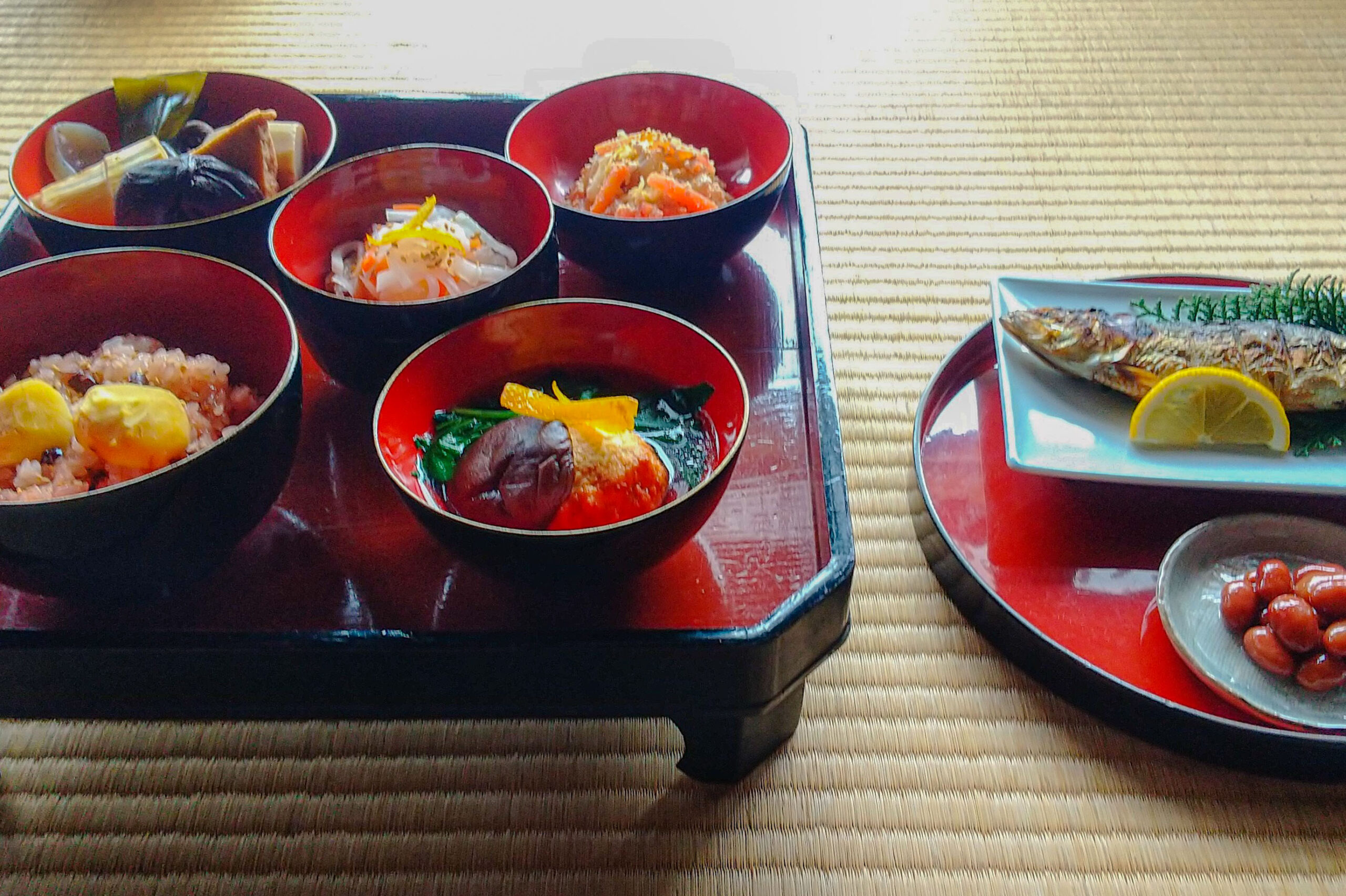
Alright everyone, let’s talk about a special New Year’s tradition in Miyazaki Prefecture – Toshitori Zen! This is a feast enjoyed on New Year’s Eve, filled with dishes that express gratitude for the past year and welcome the New Year. It’s a time for family to gather and celebrate together, and the food is a big part of that celebration.
Dish Name: Toshitori Zen / Toshitori Zen / Toshikoshi Ryori
- Region / Location: Northern and Central areas of Miyazaki Prefecture.
- Primary Area of Tradition: Northern and Central areas.
- Main Ingredients: Sea bream, salt-dried sardines, kelp, daikon radish, carrots, tofu, shiitake mushrooms.
How It’s Eaten / Served
Toshitori Zen is a lavish meal served on New Year’s Eve to welcome the New Year. The dishes served are often the same as those offered to the Toshigami (New Year’s deity). While the specific dishes vary by region, it commonly includes “Toshitori fish” (a celebratory fish), Nimono (simmered dishes), Shirae (a dish with tofu), Nimame (simmered beans), Namasu (vinegared dish), rice (often okowa, a type of steamed glutinous rice with beans or meat), and Suimono (clear soup). The leftovers are often eaten during the first three days of the New Year.
Cultural Background and Preservation
This tradition of enjoying a special meal on New Year’s Eve is rooted in older New Year’s customs, dating back to when the lunisolar calendar was used. In the traditional Japanese calendar, a day was considered to begin at sunset, so the New Year was celebrated from the evening of New Year’s Eve. At that time, people used “Kazoedoshi,” an old Japanese system of calculating age. People gained one year on New Year’s Day. Eating Toshitori Zen with family celebrated everyone getting a year older. The dishes held a special significance as offerings to the Toshigami and as a way to celebrate the New Year.
“Toshitori-uo” (Toshitori fish) is a key part of the meal, and the type of fish varies depending on the region. Coastal areas often serve sea bream, considered an auspicious fish, while mountainous areas traditionally serve salt-dried sardines. Before modern transportation, fish was a precious ingredient and a special treat.
Even today, some areas in Miyazaki Prefecture continue to observe these traditions. The dishes and how they are served can differ between regions and families, with each area and household preserving its unique customs.
Additional information:
- Toshigami (歳神): The deity that visits homes to bring good fortune in the New Year.
- Okowa (おこわ): Steamed glutinous rice, often cooked with red beans or other ingredients.
- Namasu (なます): A dish of thinly sliced daikon radish and carrots pickled in vinegar.
- Nimono (煮物): Simmered dishes, often containing vegetables, meat, or fish.
- Shiriae (白和え): A dish of vegetables mixed with a dressing made from mashed tofu.
The information about regional cuisine featured on this website (Piggy's Grandma of Japan) is summarized and adapted from the Ministry of Agriculture, Forestry and Fisheries of Japan (MAFF) website, "Our Regional Cuisines"Additional commentary is provided based on the unique experiences and perspectives of the site's editors.
The copyright for the original content regarding regional cuisine belongs to the Ministry of Agriculture, Forestry and Fisheries of Japan.
The summaries and adaptations published on this site are intended for informational purposes only. Piggy's Grandma of Japan does not guarantee the accuracy or completeness of this information. For the most accurate and complete details, please refer to the original pages on the MAFF website.


